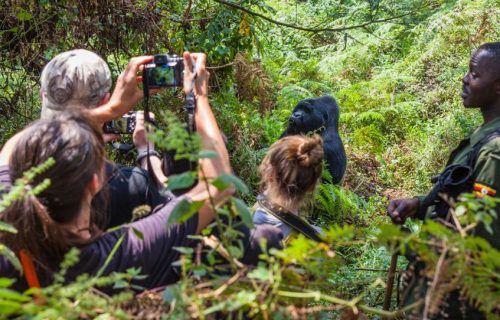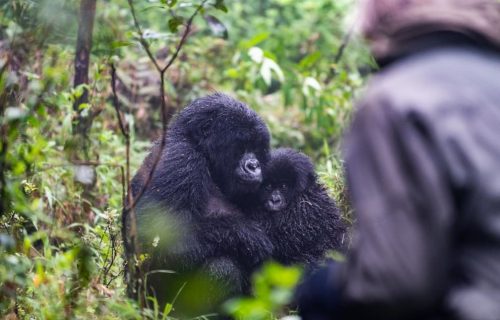Why Are Gorillas Endangered? (Save Gorillas From Extinction)
Why Are Gorillas Endangered? – Save Gorillas from Extinction. Learn about our work to protect Gorillas by direct, sustained conservation. You can get involved in endangered gorillas protection in Rwanda and Uganda today. Learn more here!
Mountain gorillas have endured unrestricted poaching, sickness, habitat degradation, and the effects of armed warfare for many years. Since their population fell, they are now regarded as endangered. However, as Gizmodo’s George Dvorsky notes, there is good news for these magnificent primates. According to a recent census, there are now 1,063 confirmed mountain gorillas, an alarmingly low number but evidence that conservation efforts are having an impact.
Saving the Mountain Gorillas
Why Are Gorillas Endangered?
Mountain gorillas are a subspecies of eastern gorillas, and they live in two locations: the contiguous Sarambwe Nature Reserve in the Democratic Republic of the Congo and Uganda’s Bwindi Impenetrable National Park. More than 75 skilled workers searched gorilla habitats for fecal samples as part of the survey. Around 2,000 samples were transferred to the Veterinary Genetics Laboratory at the University of California, Davis, where researchers conducted DNA analysis to determine individual and group identities, according to John C. Cannon of Mongabay. According to UC Davis, the researchers found 459 mountain gorillas in total in these areas, an increase from the survey’s predicted 400 mountain gorillas.
In yet another survey carried out in the Virunga Massif, an eight-volcano chain spanning Rwanda, Uganda, and the Democratic Republic of the Congo, 604 mountain gorillas were discovered between 2015 and 2016. The total number of mountain gorillas now stands at 1,063 after the findings of the most recent population census are added. In 2008, there were only 680 mountain gorillas in existence.
The most recent proof that this vulnerable primate population is gradually rebounding is the new census. After estimates indicated that there were over 1,000 mountain gorillas in existence, the International Union for the Conservation of Nature (IUCN) changed the status of the species from “critically endangered” to “endangered” last year.
Mountain gorillas were on the verge of extinction until a massive effort was made by conservationists and local communities. Park rangers have risked their lives to preserve gorillas, as Helen Briggs of the BBC reported last year. Specially trained vets care for the animals in the wild, and patrols work hard to ward off poachers. Ecotourism that is properly run has boosted regional economies and inspired locals to protect mountain gorillas.
The Dian Fossey Gorilla Fund, which helped with the Bwindi portion of the census, is led by Tara Stoinski, president, chief executive officer, and chief scientific officer. Tara Stoinski claims that the results of the recent survey demonstrate “what can be accomplished by a cross-border, multifaceted, unrelenting effort to protect a species.” She does, however, point out that mountain gorillas still require urgent preservation.
You can get involved in endangered species protection in Rwanda and Uganda today. Take a gorilla trekking trip in Uganda or Rwanda see some of the gorilla trekking packages below
Uganda Gorilla Safaris; Gorilla Trekking in Uganda takes you Hiking in Bwindi Impenetrable National Park and Mgahinga Gorilla National Park. Both the two parks host Mountain Gorillas in Uganda.
Book customized remarkable Rwanda Gorilla tours or Gorilla Trekking in Rwanda for exceptional Gorilla tours with Kabira Gorilla Safaris. Gorilla trekking is one of the Best Rwanda Safari activities popularly termed a unique wildlife experience.
Gorilla Habituation Experience in Bwindi Forest National Park in Uganda. Gorilla Habituation Experience in Uganda involves a team of individuals like trackers, researchers, conservationists, and rangers who take 2-3 years to have a group of Mountain Gorillas fully habituated.



